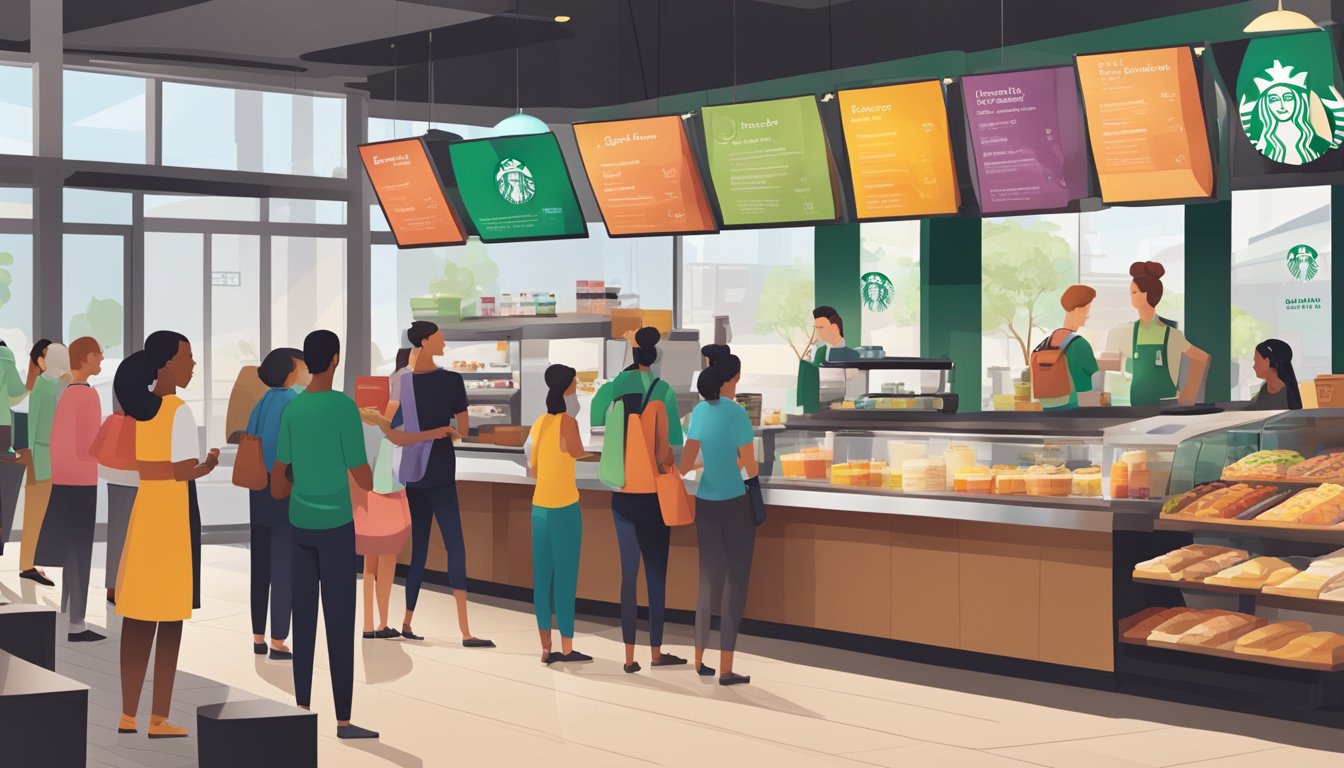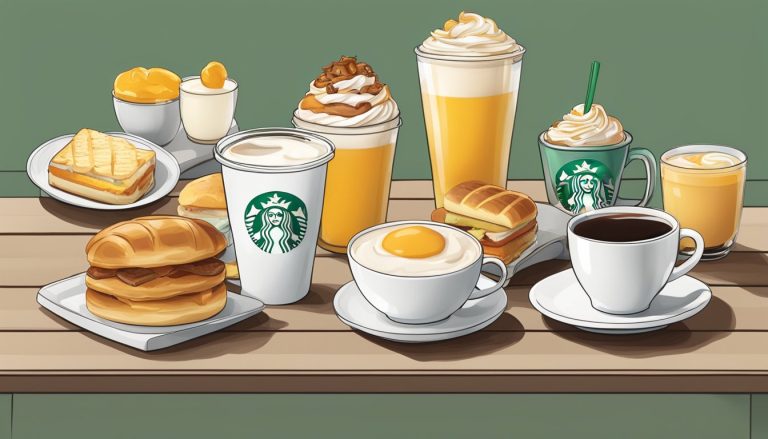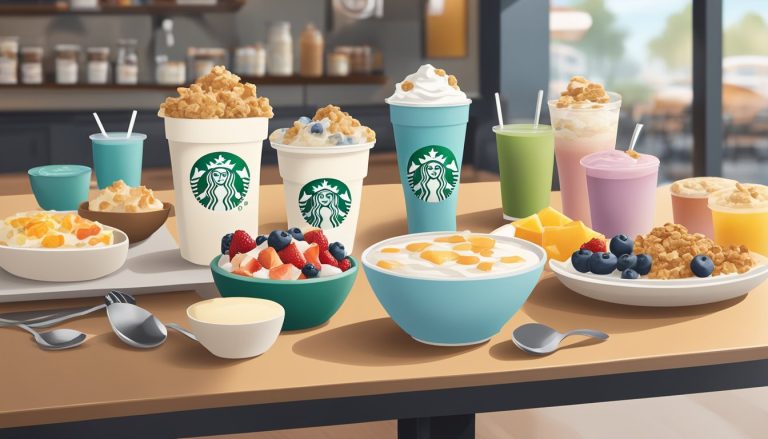Starbucks has experimented with limited-time offers to boost breakfast sales and attract budget-conscious customers. In June 2024, the coffee giant introduced a “Pairings Menu” that bundled beverages with breakfast sandwiches at discounted prices starting at $5. This strategy mirrored tactics used by fast food chains to drive traffic and increase average ticket sizes.
The Pairings Menu aimed to revitalize Starbucks’ morning business by offering value-oriented options during a period of economic uncertainty. By combining popular breakfast items with coffee or tea, Starbucks sought to incentivize customers to purchase food along with their drinks. This approach aligned with broader industry trends of promoting combo meals to maximize sales and customer satisfaction.
Despite initial fanfare, Starbucks’ foray into discounting was short-lived. The company later shifted away from limited-time promotions, citing operational disruptions and a desire to focus on core offerings. This pivot highlighted the challenges of balancing promotional strategies with maintaining brand positioning and streamlined store operations in the competitive coffee and quick-service restaurant sectors.
Understanding Limited-Time Offers

Limited-time offers play a crucial role in marketing strategies, particularly in the food and beverage industry. These promotions leverage consumer psychology to drive sales and create brand excitement.
Definition and Purpose
Limited-time offers are temporary promotions that make products or services available for a specific duration. Their primary purpose is to generate urgency and encourage immediate action from consumers. These offers often feature exclusive items, discounts, or unique experiences.
Businesses use limited-time offers to:
- Boost short-term sales
- Attract new customers
- Test new products
- Clear excess inventory
- Create buzz around the brand
The time-sensitive nature of these promotions taps into consumers’ fear of missing out (FOMO), prompting quicker purchase decisions.
Historical Use in Marketing
Limited-time offers have been a staple of marketing strategies for decades. Early examples include seasonal sales and holiday-themed promotions. As consumer research advanced, marketers refined their approach to these offers.
In the 1970s and 1980s, fast-food chains popularized limited-time menu items. This trend spread to other industries, with retailers and service providers adopting similar tactics. The rise of e-commerce in the late 1990s and early 2000s further amplified the use of time-sensitive promotions.
Today, companies like Starbucks use sophisticated data analytics to design and implement limited-time offers. These promotions are carefully timed and tailored to target specific customer segments, maximizing their impact on sales and brand perception.
Starbucks’ Marketing Strategies

Starbucks employs targeted marketing strategies to maintain its position as a global coffee leader. The company focuses on brand positioning and leverages seasonal promotions to drive customer engagement and sales.
Brand Positioning
Starbucks positions itself as a premium coffee brand offering high-quality beverages and a unique café experience. The company’s marketing emphasizes the “third place” concept – a welcoming space between home and work. Starbucks cultivates a lifestyle brand image that extends beyond coffee, incorporating elements of community and social responsibility.
The brand’s visual identity, featuring the iconic green mermaid logo, is consistently applied across all touchpoints. This strong brand recognition helps Starbucks stand out in a crowded market. The company also tailors its offerings to local tastes in different countries, balancing global consistency with regional relevance.
Use of Seasonal Promotions
Seasonal promotions play a crucial role in Starbucks’ marketing strategy. The company introduces limited-time offerings that create excitement and urgency among customers. The Pumpkin Spice Latte, launched each fall, has become a cultural phenomenon and a significant revenue driver.
Other seasonal favorites include the Peppermint Mocha during winter holidays. These time-bound offerings encourage repeat visits and social media buzz. Starbucks also creates themed cups and merchandise to complement its seasonal drinks, further enhancing the promotional impact.
By rotating its menu with seasonal items, Starbucks keeps its product line fresh and engaging. This strategy taps into consumers’ desire for novelty while maintaining core menu staples.
Breakfast Menu at Starbucks
Starbucks offers a diverse breakfast menu featuring sandwiches, wraps, and baked goods. The menu caters to various dietary preferences and includes both indulgent and healthier options.
Composition of the Breakfast Menu
Starbucks’ breakfast menu comprises a range of hot and cold items. Breakfast sandwiches include the popular Bacon & Gouda Breakfast Sandwich, priced at $3.75. For those seeking a lighter option, the menu features Hearty Blueberry Oatmeal at $3.45. Baked goods like pastries and muffins complement the savory offerings.
The menu also includes seasonal and limited-time items that align with holidays or seasonal flavors. During fall, customers might find pumpkin spice-themed treats, while winter brings cozy options. These special items add variety and excitement to the regular menu.
Starbucks occasionally introduces breakfast combos, similar to fast food chains. These combos pair beverages with breakfast sandwiches, starting at $5, offering customers value and convenience.
Healthier Options and Nutritional Information
Starbucks caters to health-conscious customers with several nutritious breakfast choices. The Sous Vide Egg Bites, available in flavors like Bacon & Gruyere or Egg White & Red Pepper, are gluten-free and protein-rich. These options appeal to those following specific diets or looking to reduce carbohydrate intake.
For customers seeking plant-based alternatives, Starbucks offers options like oatmeal and certain breakfast sandwiches made with plant-based ingredients. The chain provides detailed nutritional information for all menu items, allowing customers to make informed choices based on their dietary needs and preferences.
Starbucks’ commitment to transparency extends to allergen information, clearly labeling items that contain common allergens. This approach helps customers with food sensitivities navigate the menu safely and confidently.
Analysis of Consumer Preferences

Starbucks customers show distinct preferences for both beverages and food items, influencing the company’s limited-time offers. These preferences vary across demographics and reflect changing tastes in the breakfast market.
Demand for Coffee and Tea Beverages
Coffee remains the cornerstone of Starbucks’ beverage offerings. Espresso-based drinks like lattes and cappuccinos are particularly popular during breakfast hours. Cold brew and iced coffee sales have surged in recent years, even in colder months.
Tea beverages also play a significant role, especially among health-conscious consumers. Green tea lattes and chai tea drinks have gained traction as alternatives to traditional coffee options.
Consumer research indicates a growing interest in customizable drinks. Customers appreciate the ability to modify their beverages with different milk options, flavored syrups, and toppings.
Popularity of Indulgent and Specialty Foods
Baked goods remain a staple of Starbucks’ breakfast menu. Croissants, muffins, and scones continue to be top sellers. However, there’s an increasing demand for more indulgent options during breakfast hours.
The Impossible Breakfast Sandwich, featuring plant-based sausage, has gained popularity among vegetarian and flexitarian customers. This trend reflects a broader shift towards plant-based alternatives in the fast-food industry.
Seasonal and limited-time food offerings, such as pumpkin bread in fall or cranberry bliss bars during winter holidays, create excitement and drive sales. These items often pair well with seasonal beverages, encouraging customers to try new combinations.
Starbucks’ Limited-Time Breakfast Offers
Starbucks strategically uses seasonal and limited-time breakfast offerings to drive sales and attract customers. These special items create buzz and encourage repeat visits.
Impact on Sales and Customer Attraction
Limited-time breakfast offers significantly boost Starbucks’ sales and foot traffic. Seasonal items like the Pumpkin Spice Latte paired with fall-themed pastries create a sense of urgency among customers.
This urgency often leads to increased purchases and social media sharing. Starbucks’ mobile app notifications about new breakfast items drive impulse buys.
Limited-time promotions, such as discounted breakfast combos, incentivize customers to try new menu items. These offers can increase average transaction values and introduce customers to premium products.
Notable Breakfast Campaigns
Starbucks’ most famous limited-time offer is the Pumpkin Spice Latte, which has become a cultural phenomenon. This seasonal drink is often paired with pumpkin-flavored breakfast pastries.
The company also introduces holiday-themed breakfast sandwiches and pastries. These items, like cranberry bliss bars, complement popular drinks such as the Caramel Macchiato.
Starbucks occasionally runs breakfast promotions tied to cold beverages. For example, they might offer a discount on a chocolate croissant with the purchase of a Cold Brew or Iced Coffee.
Summer campaigns often feature lighter breakfast options paired with refreshing drinks. These limited-time offers keep the menu fresh and exciting for regular customers.
Customization and Personalization

Starbucks excels at offering customers tailored experiences through customizable menu options and personalized recommendations. This strategy caters to individual preferences while fostering brand loyalty.
Role in Enhancing Customer Experience
Starbucks empowers customers to create their ideal beverage by offering a wide range of customization options. Patrons can modify drink size, milk type, syrup flavors, and toppings. This level of choice allows customers to craft a unique drink that suits their tastes perfectly.
The Starbucks mobile app further enhances personalization. It remembers customer preferences and suggests drinks based on past orders. This feature saves time and ensures consistency in the customer experience.
For breakfast items, Starbucks offers customization options like egg whites only or extra cheese. These choices cater to dietary preferences and restrictions, making customers feel valued and understood.
Adaptation to Consumer Trends
Starbucks stays ahead of consumer trends by regularly updating its customization options. The company introduces new syrups, milk alternatives, and toppings to align with emerging preferences.
Plant-based options have gained prominence in recent years. Starbucks responded by adding oat milk and almond milk to its lineup, catering to lactose-intolerant and vegan customers.
Seasonal flavors play a crucial role in Starbucks’ customization strategy. Limited-time offerings like Pumpkin Spice Latte create excitement and drive sales. These seasonal options allow customers to personalize their drinks with trendy flavors.
Starbucks also adapts its food customization options to meet health-conscious trends. Protein boxes and lower-calorie breakfast items provide choices for customers with specific dietary goals.
The Role of Analytics in Menu Offerings

Analytics play a crucial role in shaping Starbucks’ breakfast menu offerings. Data-driven insights inform product development and help the company understand market trends.
Leveraging Data for Product Development
Starbucks utilizes analytics to identify customer preferences and develop new breakfast items. Sales data and customer feedback guide the creation of limited-time offers (LTOs) that resonate with consumers. The Impossible Breakfast Sandwich, for instance, was introduced based on market research indicating growing demand for plant-based options.
Analytics also help optimize existing menu items. By tracking performance metrics, Starbucks can refine recipes, adjust portion sizes, and improve ingredient sourcing.
Understanding Market Dynamics
Consumer research provides valuable insights into changing breakfast habits and emerging food trends. Starbucks analyzes this data to anticipate shifts in customer preferences and adapt its menu accordingly.
Market dynamics also influence pricing strategies. Analytics help determine optimal price points for new and existing breakfast items, balancing profitability with customer value perception.
By monitoring competitors’ offerings and industry trends, Starbucks can identify gaps in the market and develop innovative breakfast options to maintain its competitive edge.




